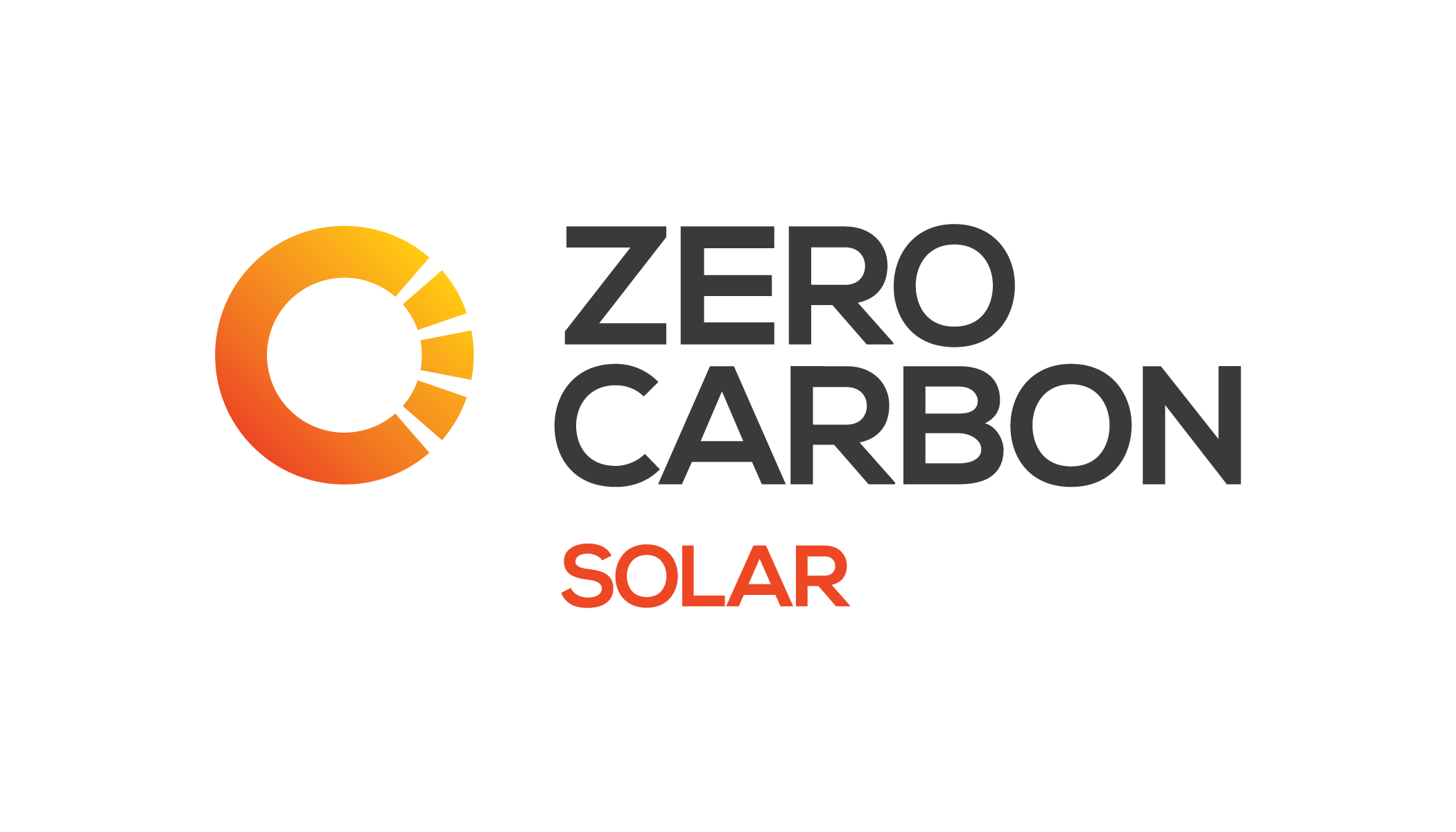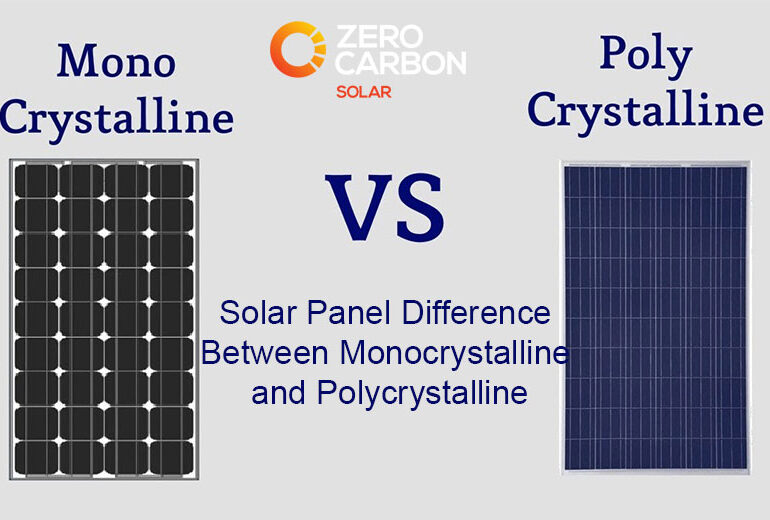Before buying solar panels some people would definitely like to know solar panel difference between monocrystalline and polycrystalline. Many people are baffled when purchasing Solar PV Panels due to the following question: Do you want to install polycrystalline or monocrystalline panels? Of course, what makes matters worse is the seller’s ignorance of the difference between the two technologies and his haste to make judgments that one of the two technologies is cheaper, more reliable, or more efficient, which leads to wrong buying decisions.
In this article, we seek to clarify the mechanism of manufacturing cells with the two techniques and then to refute the misconceptions promoted by non-professional vendors.
What do we mean by monocrystalline and polycarbonate?
These two names are just generic abbreviations of the two basic types of solar photovoltaic cells. Polycrystalline and monocrystalline, or the only crystal, “monocrystalline”. These two types represent approximately 95, of the total global production of photovoltaic solar cells, which is why we focus on these two types only in this article.
There are other types of solar photovoltaics, the most famous of which are “thin-film” cells, but we will not cover them in this article but in another article in the future
Let us use the abbreviated names for simplicity and to learn about the principle of manufacturing solar photovoltaic cells.
The manufacturing principle of solar photovoltaics
Before knowing about solar panel difference between monocrystalline and polycrystalline you can see the manufacturing principle. Poly or mono, the manufacturing principle is the same. In a simple way, high-purity silicon is poured into molds to form in a solid state, such as a cylinder or a cube, for example. This resulting form is called “Ingot”, which is the first step in the manufacturing of solar cells
Later on, the ingot is cut into very thin slices that takes a shape based on the shape of the ingot. This chip is called a “wafer.
What is the shape of the wafers produced when cutting a cylindrical ingot? And what if the ingot was a cube?
If the ingot is cylindrical, the wafer will be circular, but if the ingot is a cubic, the wafer will be square.
In the last step, silicon is doped in the wafer to form semiconductors, and then the wafer is treated in several stages to form what is called a solar (photoelectric) cell “PV Cell”. These cells are assembled into panels, which are usually the final products that are made to put them in the market.
Read Solar panel difference between monocrystalline and polycrystalline
What is the difference in manufacturing process to obtain poly cells or mono cells (simplified)?
The main difference lies in the first step when silicone is poured into the molds. Here we have to explain the two casting methods independently.
How to obtain polycrystalline cells?
The silicone material is directly poured into the molds and the solid state transition takes approximately two days. As a result, we don’t get one crystal, but rather an enormous number of crystals close together and bound together. And then by cutting the resulting ingot, we can get the wafers and complete the processing as we explained previously.
Due to simplicity of process companies can choose any shape of mold, but why do companies choose cubic molds.
Well done! The final aim of this process is to obtain solar panels with the least possible wasted space. That is, we don’t want to leave extra spaces between cells on the surface of the solar panels because our goal is to get the largest effective area capable of generating electricity from the surface of the panel. Thus, a row of 60 or 72 squares or rectangles in the board can blur the spaces between these shapes. And yes, cells can also be rectangular.
Poly solar cell
Notice the adjacent shape. Can you see the multiple crystals on the surface of the cell? Yes, that is why it is called polycrystalline. The simplicity of the method of manufacturing polycrystalline cells is the reason for its lower price compared to mono, but this is reflected in the weaker efficiency due to the polycrystalline.
How to obtain mono-crystalline cells?
As a general rule, the higher the purity of the wafer, the more effective it is to produce more electricity. With this in mind, scientists have tried to pour silicon in innovative ways into the molds to form a single huge crystal.
Indeed, Czochralski was able to develop a mechanism that enabled scientists to manufacture one huge crystal, and this mechanism was named after him. Simply, a single silicon crystal was placed in the mold and silicon was poured over it slowly with a circular motion and with certain temperature conditions and certain rotation and drag speeds.
Scientists were able to form a single crystal coherent with atomic characteristics identical to the core crystal. Beautiful is not it? As a result, we get a single pure crystal, but do you know what the shape of this crystal is? Well done! Its shape is cylindrical due to the rotational movement. Thus, the wafer resulting from cutting this crystal (ingot) will be circular in shape and thus the cell will be circular and the solar panels are a set of compact circles. Have you seen such panels?
Of course not! Scientists soon discovered that a group of circles next to each other in the panels would leave wide spaces, and thus the panels’ efficiency would be weak. So, what is the solution? The next solution was to cut the cylindrical ingot to keep perpendicular edges, thus cutting square slices is ideal for forming solar Mono solar cell panels, but the solution generated a large waste of ingots, which raises the manufacturing cost unacceptably.
And here the companies fell into the debate between reducing the wasted space on the panels by making cells closer to the square shape, and between reducing the waste of costly ingots.
Logically, the single crystal increased the efficiency of the mono cells, which increased the production of electric current, but increased the production cost compared to the poly.
Comparison of poly solar cells and mono solar panels
It is common to circulate the following three information as absolute facts
Polycarbonate sheets are easily recognizable due to the appearance of polycrystalline silicon and are
- usually blue in color and mono panels can be recognized due to the angled shape of the cells and the uniform color of the cells, which is often dark blue or black
- Mono panels are more efficient than polycarbonate and thus generate more electricity compared to polycarbonate.
- Mono panels are more expensive than polycarbonate but they generate more returns thanks to the difference in production. The results above were correct until a few years ago. but after 2019-2020, we can critique them all.
- Due to the ability to reuse waste materials to manufacture poly solar cells, it becomes possible to find mono panels with ideal square cells.
- In addition, it became possible to obtain dark colored poly sheets (very similar to mono due to the spraying of the anti-reflection material from the face of the cell.
- Can you know the type? Also, many companies were able to raise the efficiency of the polycarbonate panels, so that the panels available in the market matched the mono panels with an increased efficiency.
- As for the cost of manufacturing, due to the tendency of many companies to expand production or even completely switch to mono technology, the cost of production has decreased greatly and it is expected that it will intersect from polycarbonate technology during the year 2021.
- The new versions of solar panels in 2021 revealed that the mono technology has reached the same thermal coefficient of the polycarbonate panels.
Summary for the Solar panel difference between monocrystalline and polycrystalline
If you are thinking of buying photovoltaic solar panels for the roof of the house or even for a huge electrical station, the manufacturing technology mono or poly does not interest you much, but what matters to you is that you get the best efficiency. and thus the highest possible capacity for the panel, compared to the price. Thus, a professional seller can calculate the return on investment and the cost of each kilowatt per hour expected to be produced, and by creating this balance, you will guarantee the best economic return on the investment that you make. These were some points for solar panel difference between monocrystalline and polycrystalline which you should consider when buying solar panels for home.
You can also read the following most famous articles:




